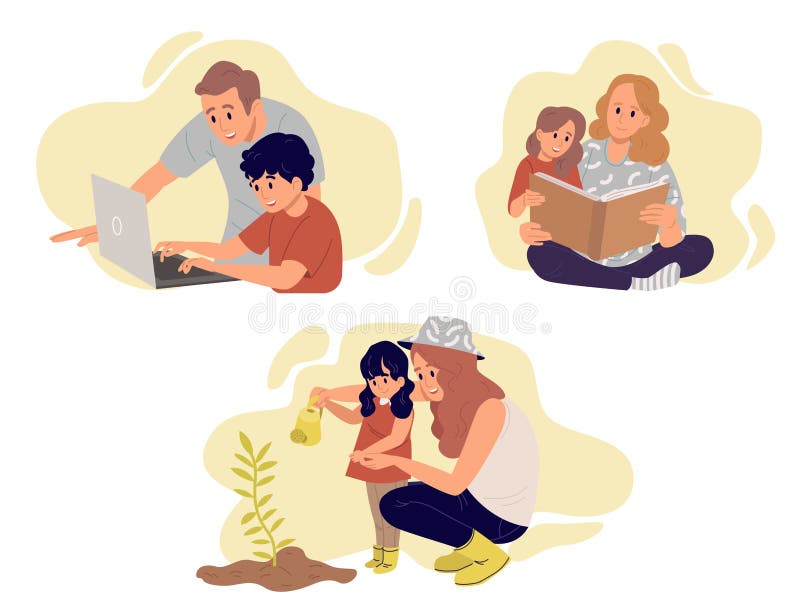Don't you feel just powerless when your little one begins a tantrum in the middle of an important event? Or the frustration of trying to drag them to bed?
Almost every parent has been in such difficult situations, and dealing with them is definitely not easy. But what if we told you there is a way to tackle these behaviours more calmly while simultaneously fostering meaningful relationships with your child?
The practice of PACE parenting in daily interactions with your child is known to build more healthy relationships. It plays a crucial role in having a positive impact and a therapeutic effect over a wide range of developmental areas.
Read on to learn more about the PACE Approach to therapeutic parenting and its impact on your child's development.
Table of Contents
Connection Before Correction: The PACE Parenting Model
The PACE parenting model was designed by the American psychologist Dan Hughes. Being a father of three, Dr. Hughes received his PhD from Ohio University, specializing in the treatment of children and youth with chronic emotional and behavioural problems due to experiences of trauma.
In essence, the PACE parenting approach is a therapeutic approach that can be used in daily life by thinking, feeling, communicating, and behaving in a way that instils a sense of safety in the child. It is widely used in childhood institutions such as foster care units, especially to provide therapeutic care for children with developmental trauma.
Moreover, it helps to avoid attachment difficulties, build meaningful and secure attachments and train a troubled child to reflect on their thoughts and actions without being judged through meaningful parent-infant interactions.
TUNE INTO THIS PODCAST: The Psychology of Effective Parenting: Navigating Cultural Nuances in Parenting with Dr Shabnam Berry-Khan
The Four Principles of PACE Parenting
The PACE Model involves four fundamental PACE Principles to be implemented in everyday interactions throughout the child's developmental stages. They are as follows:
Playfulness
The elements of playfulness are all about making your child feel free to voice their opinions and making them feel heard by building an environment of lightness and interest through meaningful interactions. For instance, maintaining a light tone of voice with your child rather than an authoritative and demanding one makes them feel a sense of joy and fun when talking to you.
Look at it like you would at a parent-infant interaction - both the baby and the parent seem happy with each other's company, getting to know each other without judgment and criticism. Playful moments assure both the parent and the child that moments of conflict are temporary and will never tarnish the strength of their relationship.

It should be noted that the playfulness element is not merely a constant stream of jokes and laughter. Rather, it is about instilling a positive outlook and finding joy in everyday moments.
Incorporating a playful stance towards your children can also help them regulate their emotions, transforming challenging situations into moments for laughter and reflection.
For instance, your child drops a bottle of water on the rug. Rather than playing the part of a strict corrector, adopting a playful approach by lightening the situation and making them reflect instead of fear allows for more emotional development and learning.
Moreover, playfulness is quite handy for parents in encouraging cooperation during discipline.
Ultimately, parents can build a positive relationship with their children, all the while allowing them to navigate the full spectrum of their emotions.
Acceptance
Unconditional acceptance is the foundation for a child's sense of safety.
It does not mean merely tolerating the behaviour but showing your child that you understand them and accept their thoughts, feelings, and intentions.
Naturally, it also does not mean that you encourage and accept bad behaviour, but instead, it encourages separating the child's bad actions from their worth.
For instance, your child may have done something wrong, but instead of criticizing them for their actions, patiently and gently educate them on how they went wrong until they realize it would be a better option to maintain their confidence and trust in you.
This can be done by establishing clear limits about right and wrong. And when they do cross those limits, know and let them know that the conflict is about their outward behaviour, not their value as individuals.
For a parent, approaching this element of the PACE parenting model with curiosity is key. Having a keen interest in trying to comprehend why your child behaves in a certain way can properly aid you in dealing with them with empathy and guidance.
Curiosity
If you want to unlock the door to your child's fascinating inner world, be curious!
Whatever they may do, try to go up to them in a non-judgemental manner and try to understand the 'why' behind their actions.
Many times, children know when their actions are wrong; however, they may struggle to explain and understand the reasons and may feel hesitant to share their feelings.
For instance, instead of asking, "Why did you do that?" in an accusatory manner, ask, "What do you think was going on?" or "I wonder what made you do that?". Make sure to maintain eye contact with them and have a soft facial expression. This shows the child that you're more willing to understand and help them instead of judging and criticizing them.
When responding to your child's mistakes, curiosity involves being empathetic instead of angry. Through the conversation, you can even try to make guesses as to what the child must have been thinking without expecting to hear a response from them, building a non-judgemental atmosphere, allowing the child to stay open and engaged.
As you start guessing, the child can absorb alternate motivations behind their behaviour, and they may realize that their behaviour resulted from fear or confusion instead of something inherently wrong within them.
Through candid discussion with your children, you can replace feelings of defensiveness and shame with guilt and a realization of what they did wrong instead of a fear of punishment.
Empathy
Having empathy is the best way to let your child feel the compassion you have for them. Being empathetic shows your child that their inner world is important to you and that you want to help them through their difficult times.
When you're being empathetic, you're showing your child that you feel their pain in their hard times, demonstrating to the child that they understand that the experience is challenging for the child.

This makes the child feel that they are not alone, further nurturing their sense of safety by showing that they will be with the child. At the same time, they navigate the emotional rollercoasters of challenging experiences, providing them comfort and support.
Showing the child that you will not abandon them when they need you the most nurtures a more therapeutic relationship, making them feel they can trust you in tough times.
ALSO READ: Tips And Tricks For Effective Parenting | Parents Guide
Conclusion
Embarking on a PACE journey has numerous benefits since the elements of PACE look at the child as a whole, not just their outward behaviour. It trains children to have more trust in their parents and reflect upon their ideas, motivations, and actions, equipping them with skills that play a critical role in leading a successful and satisfying life.
For adults, employing the PACE parenting technique profoundly impacts minimizing conflicts with their children and productively dealing with them by forging deeper connections. Moreover, PACE is a valuable tool that opens a parent's eyes to the magical world of their children, which is the root of their behaviour and contributes to healthy parent-child relationships.
FAQs
What is Empathy in the pace model?
Empathy in the pace parenting model is the best way to let your child feel your compassion for them. Being empathetic shows your child that their inner world is important to you and that you want to help them through their difficult times.
What does pace stand for?
PACE stands for playfulness, acceptance, curiosity, and empathy.
Who developed pace parenting?
Dr. Dan Hughes developed the pace parenting approach.











[…] to the University of Texas Health Science Center, children who receive warm and responsive parenting through maternal behavior are more likely to regulate their emotions and build positive social […]